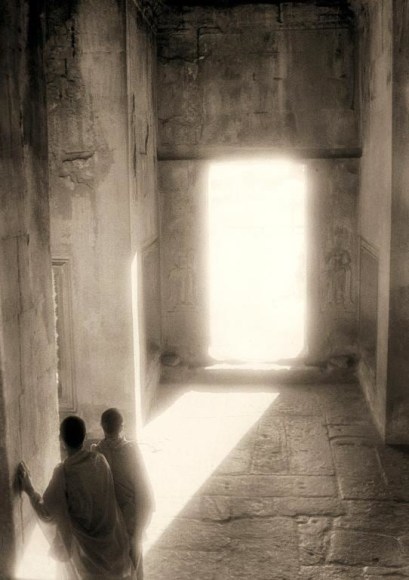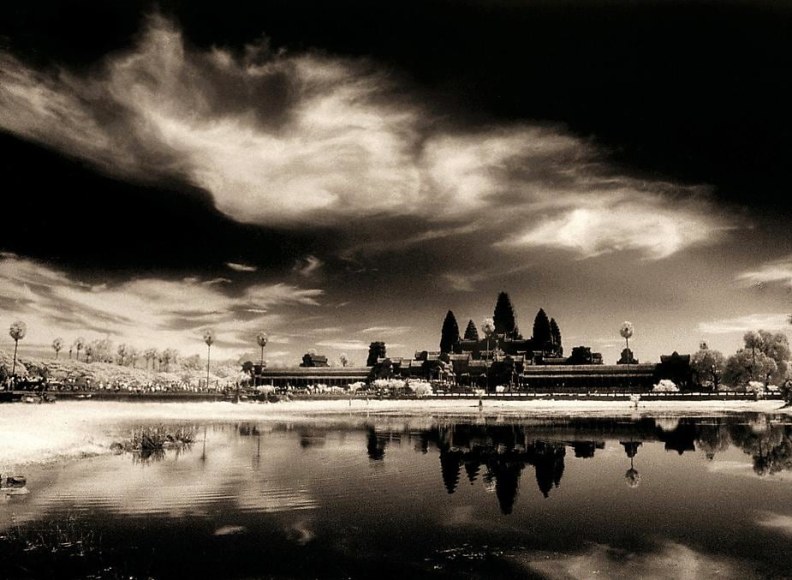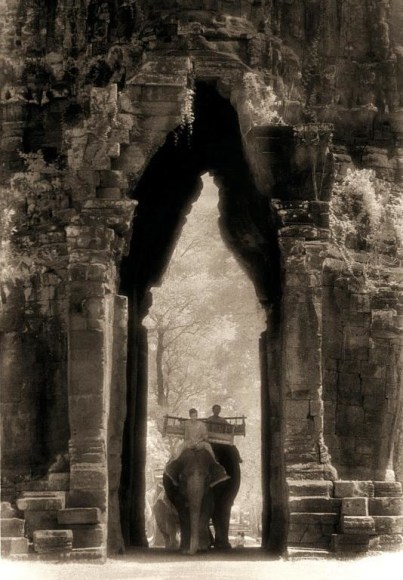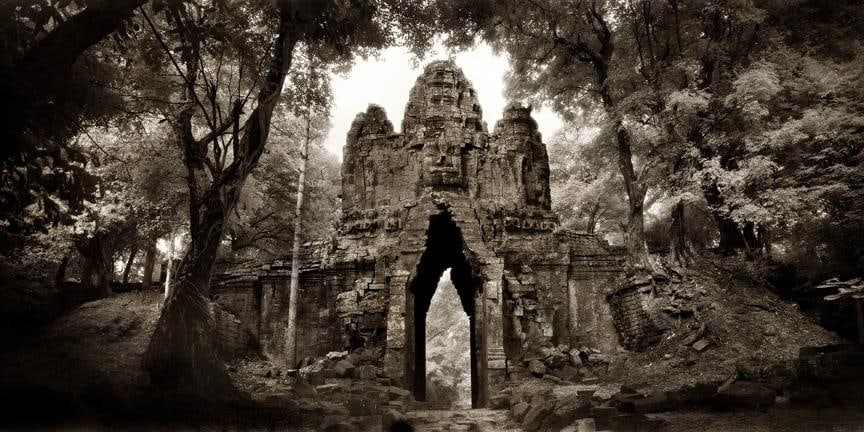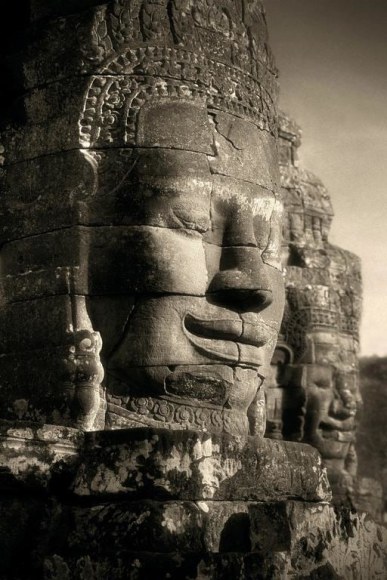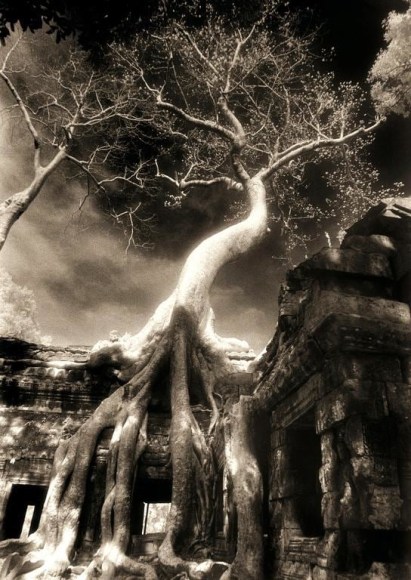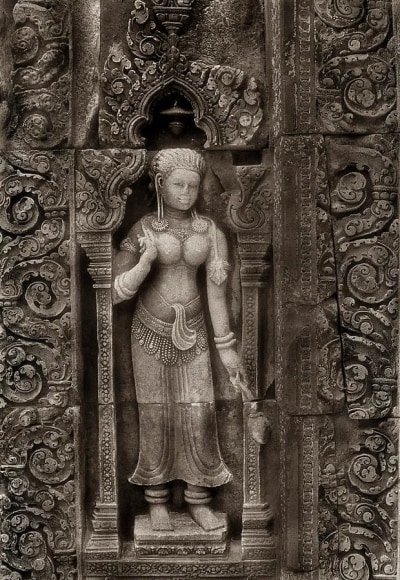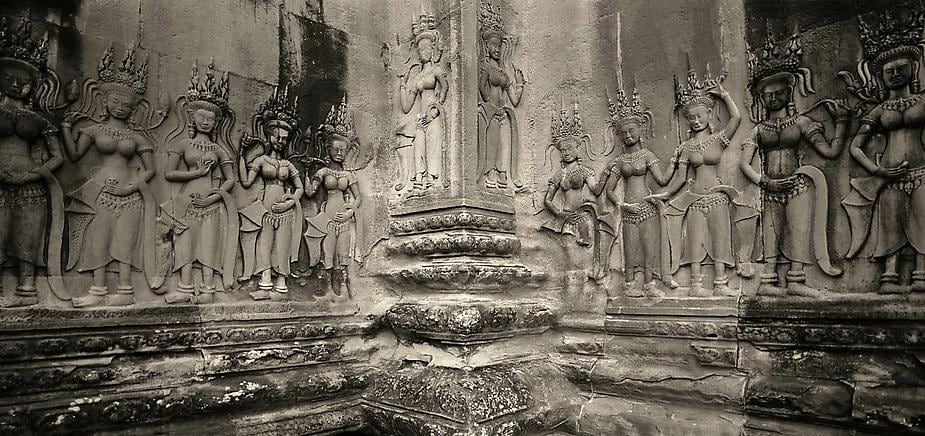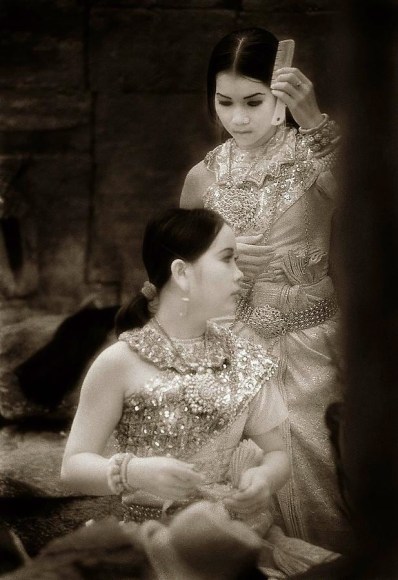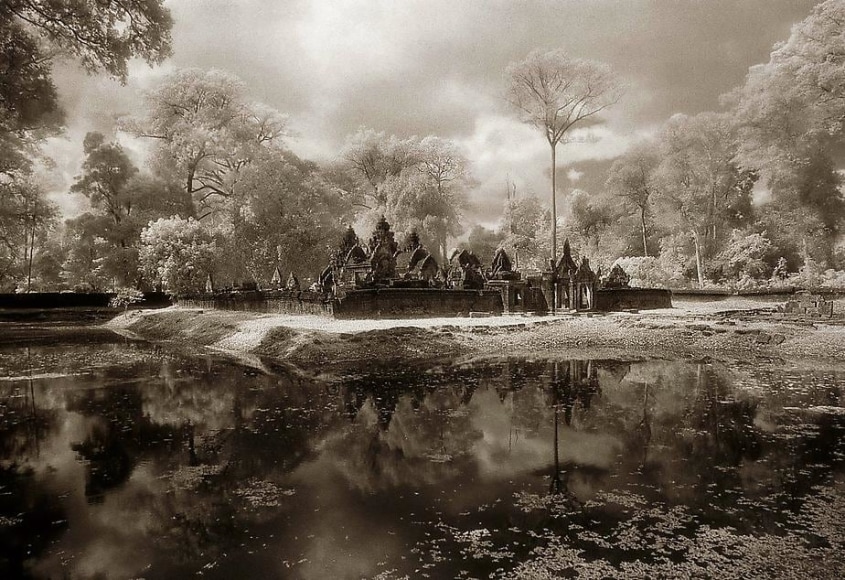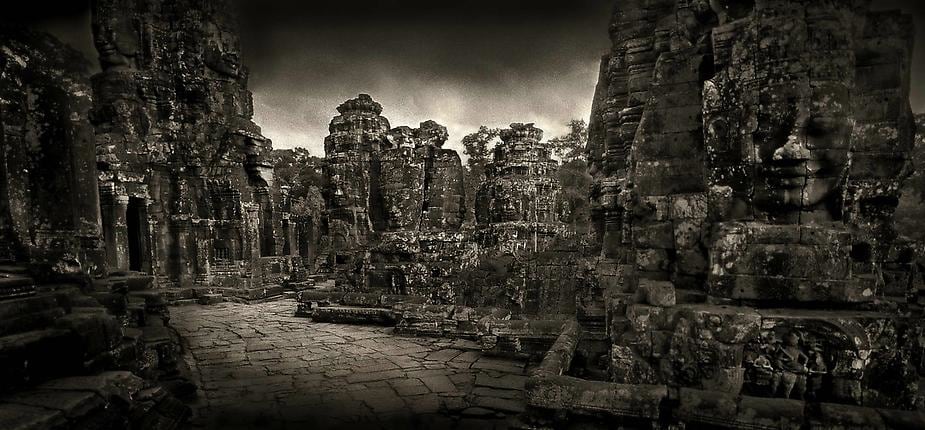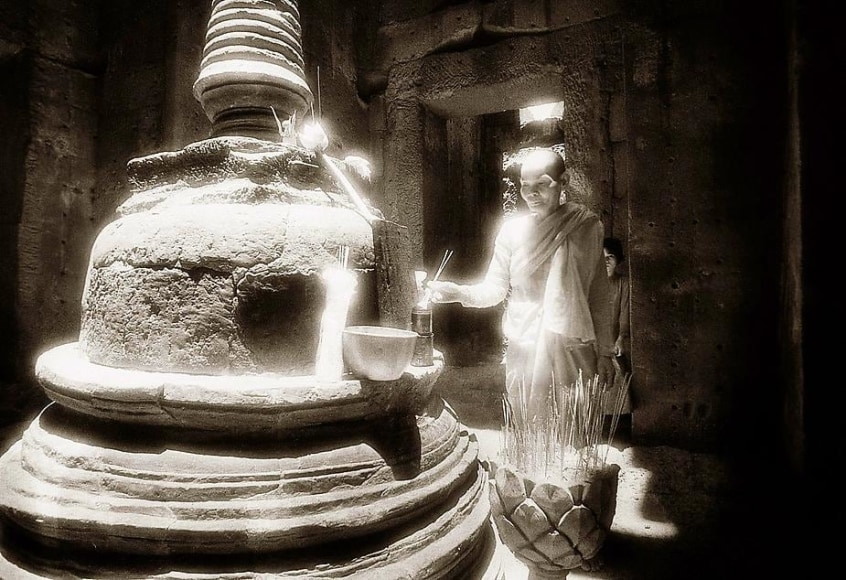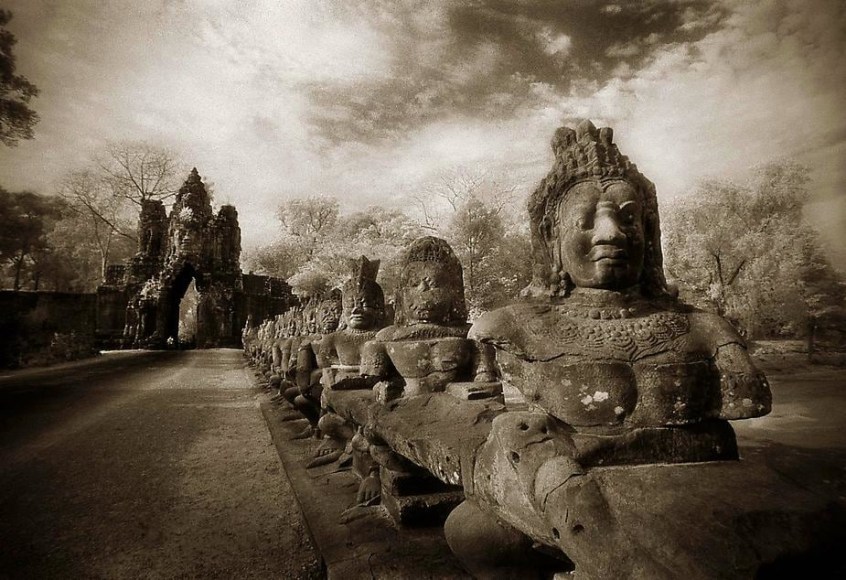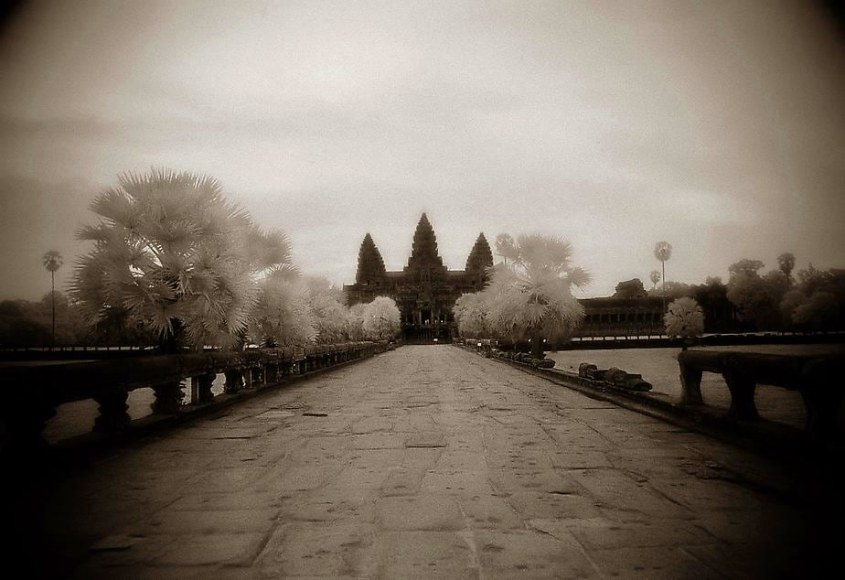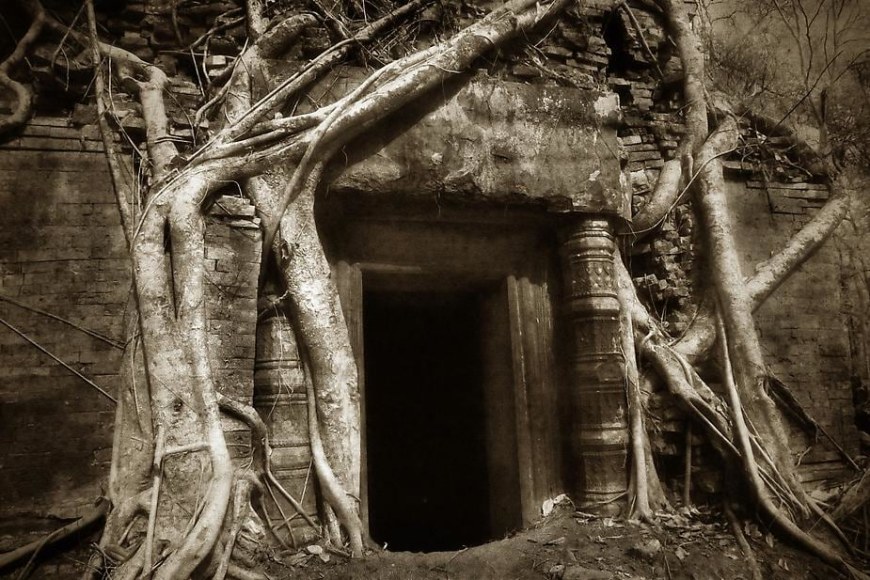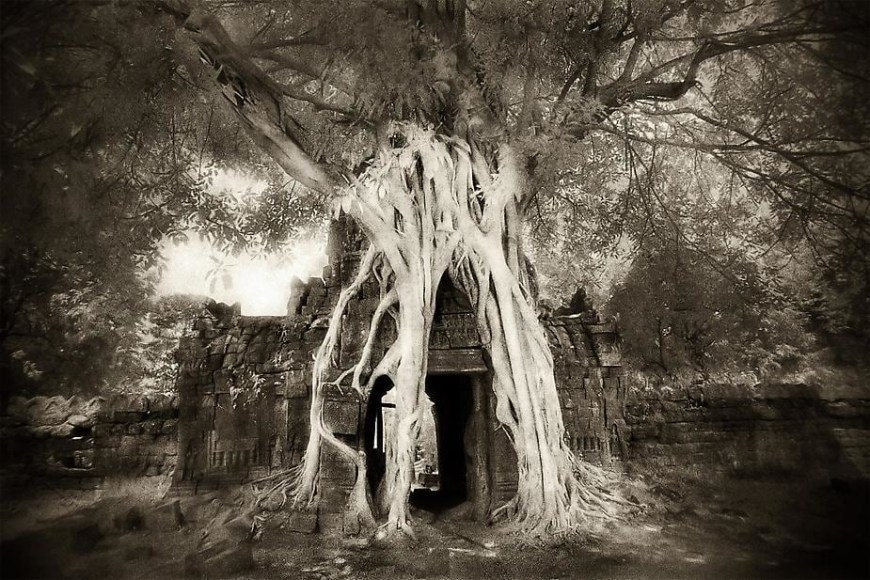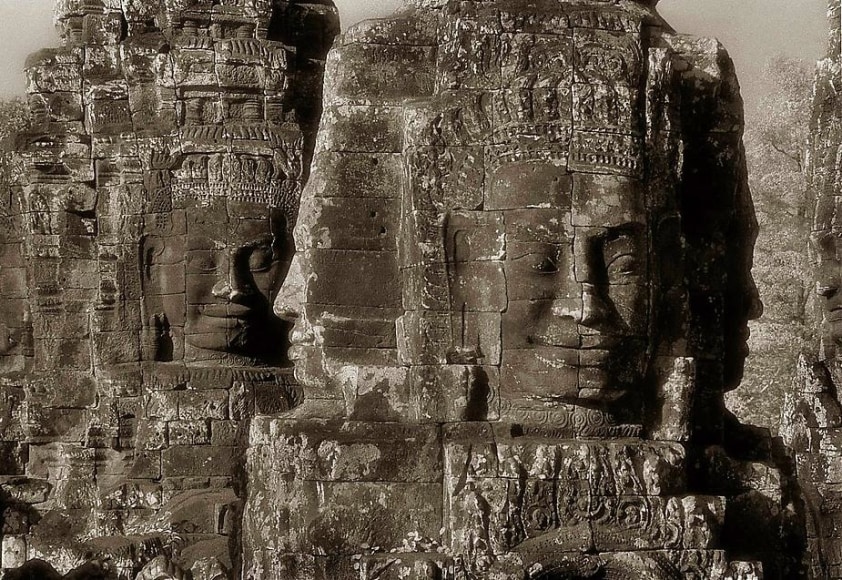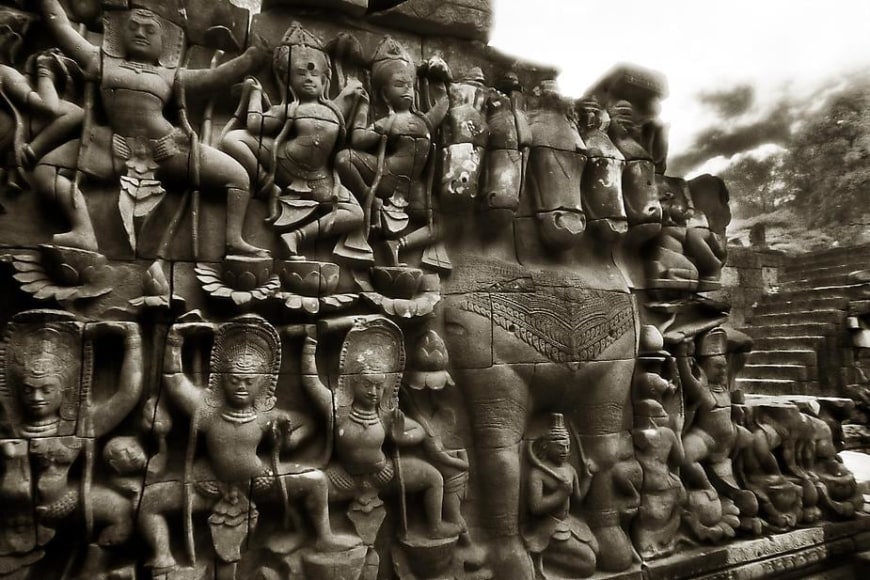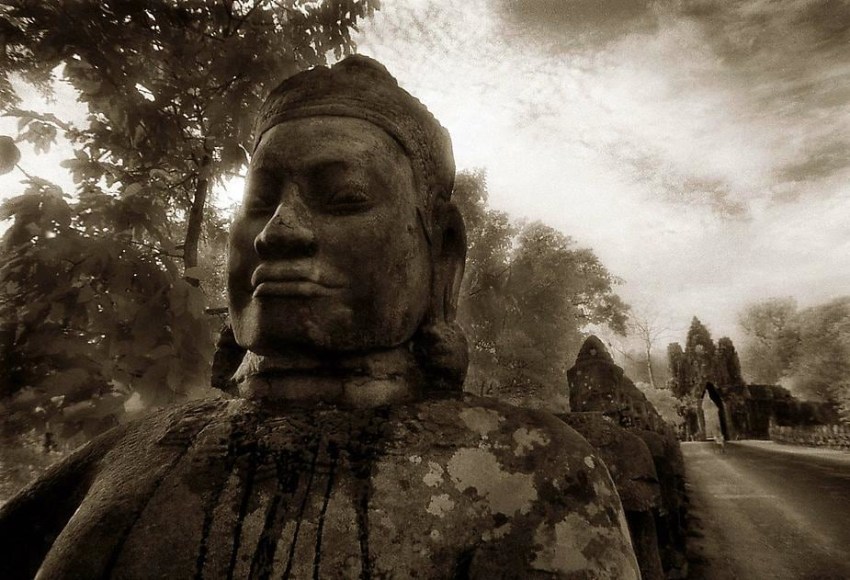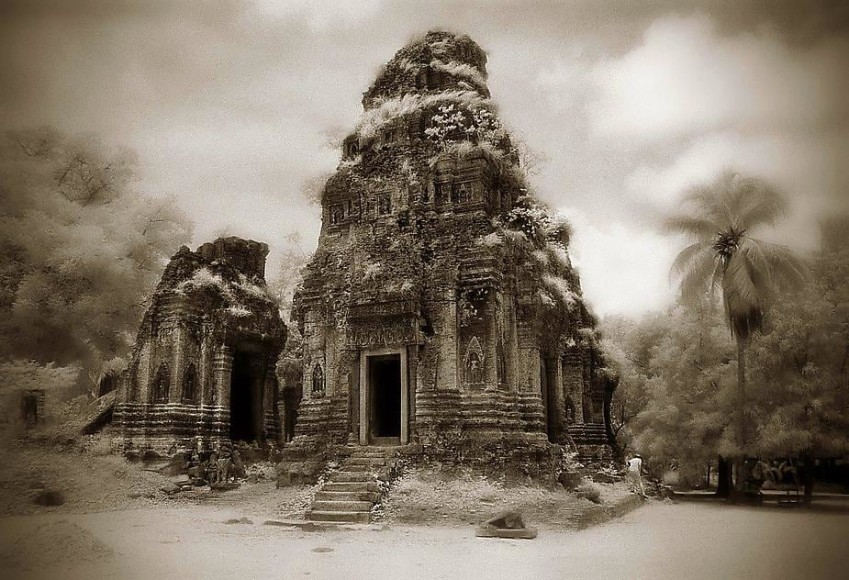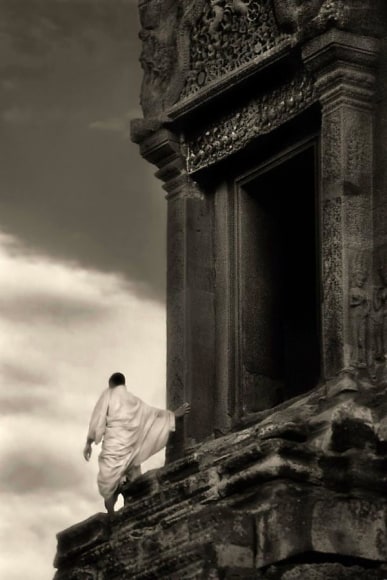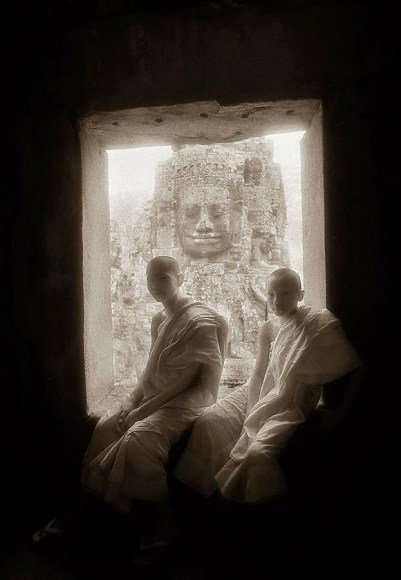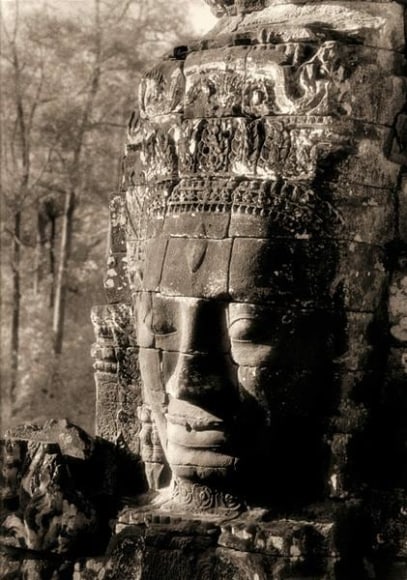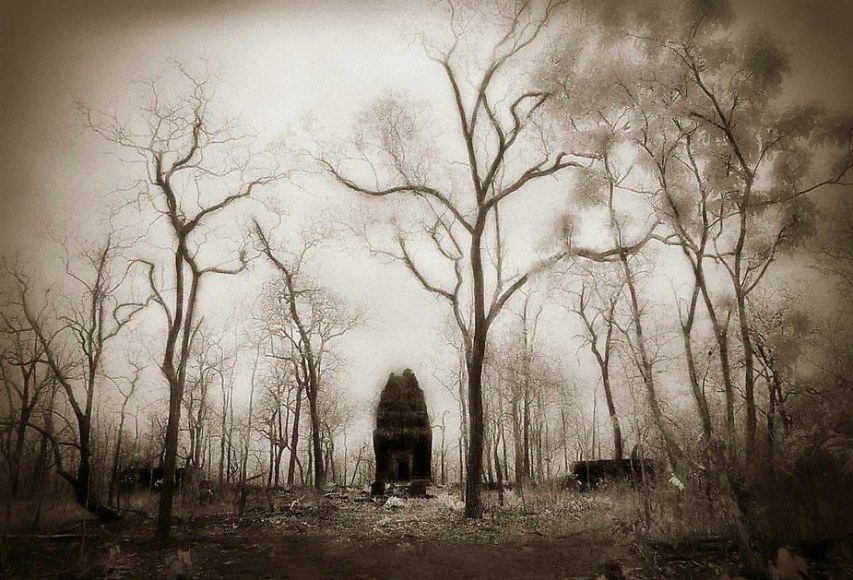American photographer John McDermott will exhibit a collection of monochromatic photographs from his series Elegy: Reflections on Angkor, a study of the stone temple ruins in Cambodia, for the first time in Los Angeles. Hailed as “the Ansel Adams of Angkor” by The New York Times, McDermott began photographing Angkor in 1995 while there to witness a total eclipse of the sun. This unique visual experience—watching the surreal light of the eclipse wash over the ruins—inspired a long-term photography project aimed at preserving a vanishing vision of the temples as long-slumbering ruins being overtaken by jungle, and entwined with village life.
In the mid-1990s, when McDermott first visited Cambodia, the country was still recovering from its dark period of civil war and genocide. While visiting again in 2000, McDermott realized that the political changes then opening up the country would also lead to an increase in international tourism. He set out to create a comprehensive portrait of the temples and their surroundings in a timeless, evocative style that would mirror the dark, mysterious spirit of a place that has little recorded history other than the bas-relief carvings that cover the stones.
The Angkorian Empire flourished from the 9th through the 14th centuries, at which time the temples, which cover almost 250 square miles, were virtually abandoned. The French explorer Henri Mouhot encountered the ancient site in the 19th century, bringing it to the attention of the West, and declared the temples “the work of giants.” Since 2000, the Angkor archaeological complex has welcomed an increasing number of international tourists, further changing the nature of the site. Some two million people are expected to visit this year.
McDermott’s images were all made before this major influx of tourism. International attention has forced the temples into a new incarnation as a high-profile tourist destination rather than a remote jungle ruin. In fact, many of the views McDermott captured in his photographs are no longer visible due to changes in infrastructure and restoration efforts.
When viewed as a body of work McDermott’s photographs of Angkor reveal a moody, surrealistic world redolent with the mysterious spirit one encounters when visiting. His Angkor series includes both sepia-toned silver gelatin prints and archival pigment ink prints. To create his vision, McDermott uses specialized black and white film and strong darkroom interpretation.
Originally from Little Rock, Arkansas, McDermott worked for four years in the feature film industry in Los Angeles before arriving in Bangkok in 1993 to pursue a career as photographer. He now lives in Siem Reap, Cambodia, which he uses as a base for photographing Asia. His work has appeared in numerous publications, including The New York Times, Time, Newsweek, and The International Herald Tribune. His book, Elegy: Reflections on Angkor, was published in 2010. His photographs are on display as part of the permanent collection in the National Museum in Phnom Penh, and are held in private collections around the world.

